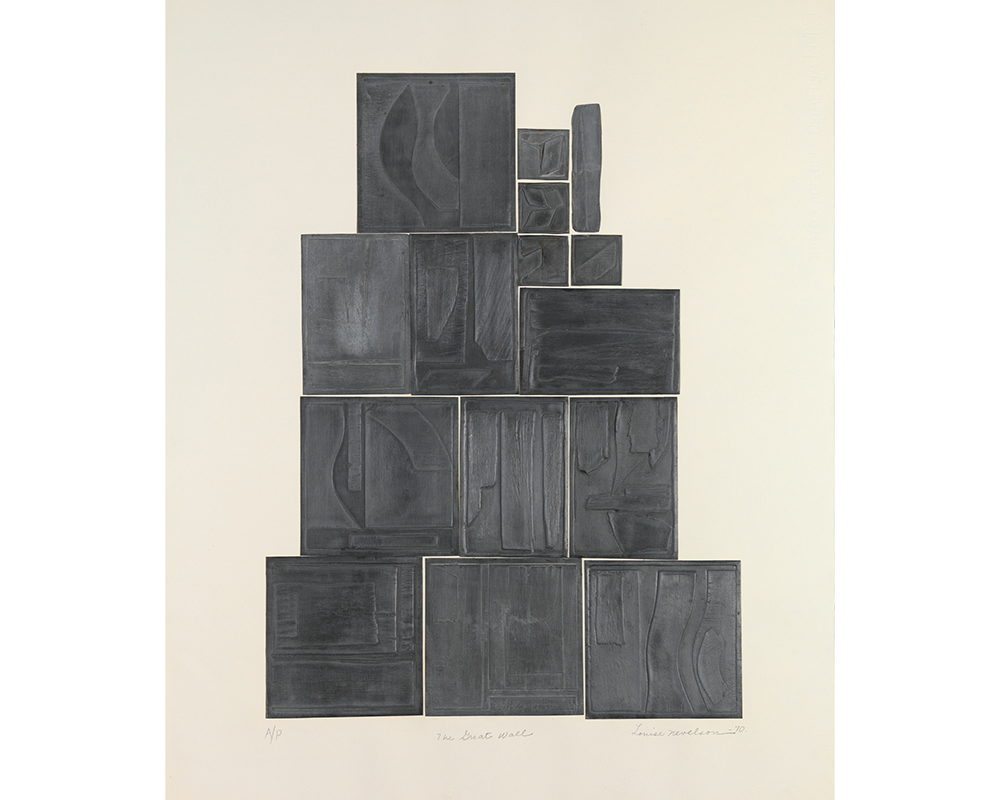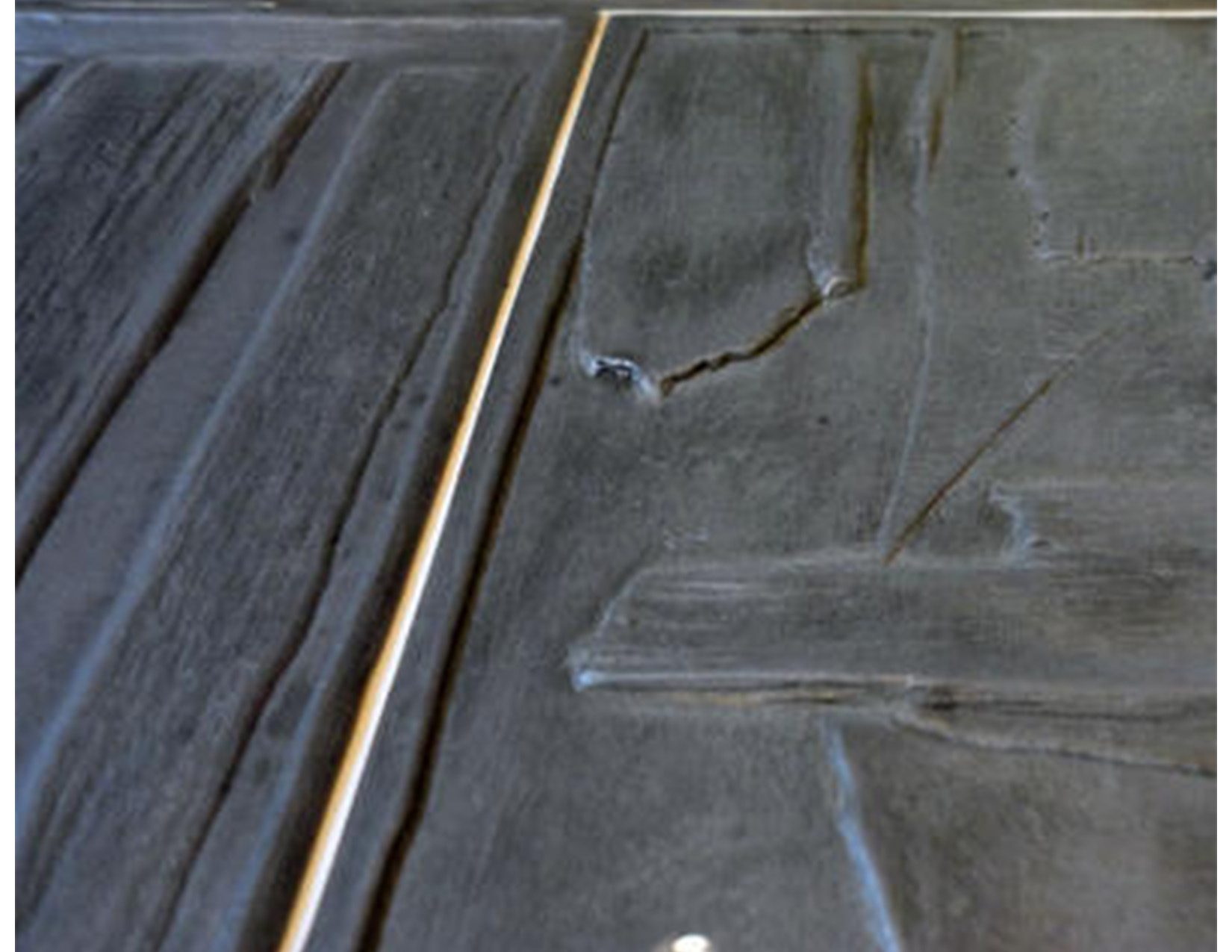
The Great Wall
Julie Warchol is the 2012-2013 Brown Post-Baccalaureate Curatorial Fellow in the Cunningham Center.
Known for her large-scale wall assemblages, or “environments,” made entirely of wood boxes and debris usually painted a uniform black, Louise Nevelson’s work relentlessly defies categorization of both style and media. She was interested in African and pre-Columbian art, as well as Cubism for its treatment of space and form, but refused to be affiliated with any modern movements or “-isms.” Similarly, her unconventional explorations of diverse media – sculpture, painting, printmaking, and even tapestry – reflect her singular, noncompliant artistic practice. Blurring these boundaries with the utmost confidence, Nevelson began making prints in the early 1950s which informed and reflected upon her sculptures. It was not until the 1970s, however, that she created a union of sculpture and printmaking.
The Great Wall perfectly exemplifies this cross-media relationship. It is a part of the “Walls” series of six lead intaglio relief prints in which Nevelson integrated wood relief sculptures directly into the printmaking process. Built specifically for the prints, the relief sculptures were used to emboss, or physically imprint, the surface of the lead foil. Nevelson then arranged the lead foil pieces on paper to create the finished print that we see above. In the “Walls” series, Nevelson truly heightens and embraces the sculptural possibilities of her prints.

Detail from The Great Wall. Photograph by Julie Warchol.
Nevelson’s The Great Wall highlights her obsession with the shifting subtleties of light, shadow, and surface texture. Reminiscent of her sculpture environments, each “cell” within the towering composition contains a microcosm of embossed organic shapes which protrude, capturing the impression of the wood grain from the original reliefs. With time, the surface will continue to evolve as the lead oxidizes, creating a unique patina. These mutable qualities lend an enigmatic aesthetic to her work that corresponds to the mystical nature of the artist herself. In her insistence on expanding the limits of printmaking and sculpture, Louise Nevelson exposes the amorphous space created at their intersection: “My total conscious search in life has been for a new seeing, a new image, a new insight. This search not only includes the object, but the in-between place. The dawns and the dusks. The objective world, the heavenly spheres, the places between the land and sea…”